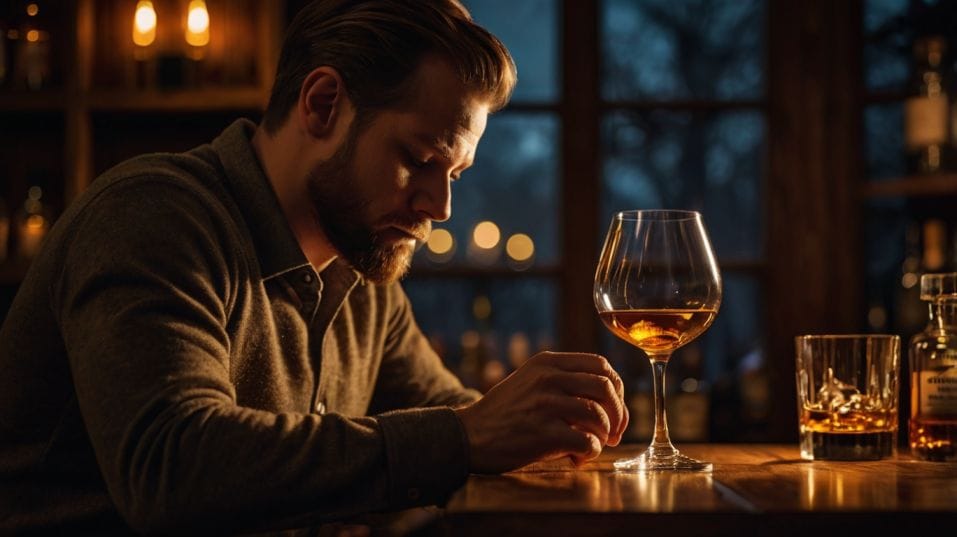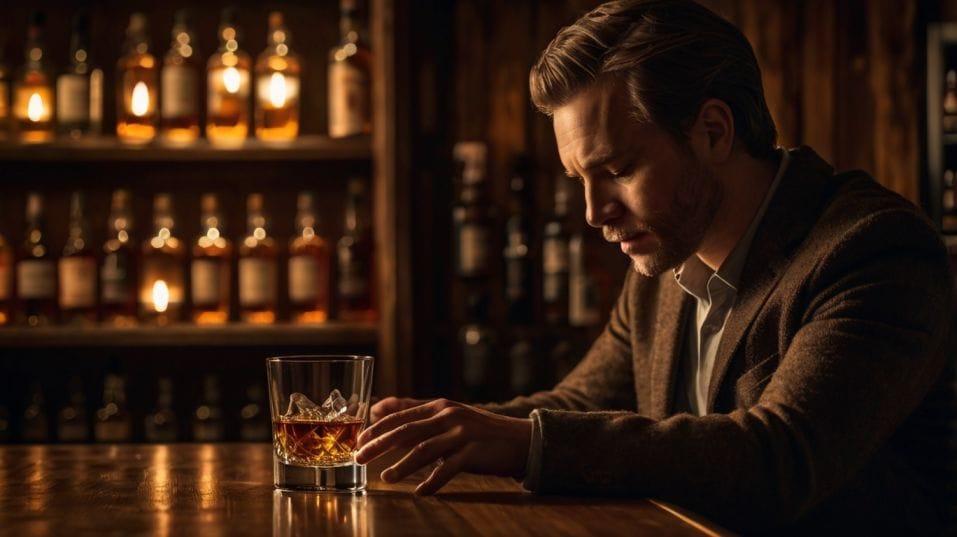The Role of Nose vs. Palate in Whiskey Appreciation
Unlock whiskey's full flavor by learning how your nose and palate work together. A guide for curious drinkers ready to taste with confidence.

Ever wonder why your whiskey smells richer than it tastes? If you're just starting to explore, here’s a secret: your nose does the heavy lifting.
Flavor begins before the first sip. While your palate adds texture and finish, it’s the aromas that shape the story.
To truly appreciate whiskey—without guessing, second-guessing, or memorizing notes—you need to train both senses in sync. Here's how to make them your sharpest tools, not just background noise.
The Nose Is Your Primary Instrument
Nearly 80% of what you perceive as “taste” is actually aroma. That’s not marketing fluff—it’s how your brain processes flavor.
When whiskey evaporates in the glass, it releases volatile compounds that hit the olfactory receptors in your nose. These compounds carry everything from caramel to tobacco to citrus peel.
That’s why your first step should always be nosing, not sipping. Pour a dram, let it breathe, and bring the glass to your nose—not all the way in, just close enough to catch the rising scent.
Inhale gently through your nose with your mouth slightly open. You’re not looking for a list of aromas; you’re scanning for patterns, impressions, triggers.
Does it remind you of anything? Does it hit sharp and bright, or warm and rounded? The top notes will usually be alcohol-forward, especially in higher-proof whiskey.
But with time and air, the deeper, more telling aromas will start to reveal themselves—dried fruit, toasted oak, earthy grain, spice. The more you train your nose, the more you’ll catch, faster and more accurately.
And yes, you can absolutely train it. Smell everything. Fruit stands, spice racks, old books, new leather, wet soil. Every smell you log becomes a reference point. You’re not just learning whiskey—you’re building a sensory database.

The Palate Confirms and Contradicts
Once you've nosed a whiskey and have a mental picture of what you expect, the sip is where things get real. The palate doesn’t just confirm aromas—it adds weight, temperature, structure, and duration.
You’re not just asking what it tastes like. You’re asking:
How does it land—sharp, smooth, heavy, light?
Where does it move—tip of the tongue, back of the throat, sides of the mouth?
What textures show up—oily, silky, dry, chalky?
How long does it linger—and does it change while it lingers?
Start with a small sip and coat the mouth. Let it sit briefly before swallowing. Pay attention to when the flavor peaks—some whiskeys pop right away, others build slowly. Then comes the finish.
A long, clean finish can be a hallmark of quality, but a short one isn’t always bad. Some lighter or younger whiskeys are designed to be crisp and direct.
If the flavor doesn’t match the nose, that’s not a flaw—it’s a sign. A whiskey that smells sweet but tastes dry might be hiding complexity.
One that smells smoky but drinks clean could be more balanced than it first appears. These contrasts teach you to trust your senses, not the label.
Sensory Integration: The Real Skill
Whiskey appreciation isn’t about choosing between nose and palate. It’s about using them together—consciously, repeatedly, and in rhythm.
The best tasters aren’t memorizing notes. They’re building an internal map: smell, taste, finish, repeat. With each pass, the whiskey unfolds a little more.
A good dram changes across time, temperature, and even your own mood or environment. You might get vanilla and clove on one sip, then find toasted almond and leather minutes later.
That’s not random. That’s complexity. And complexity is where quality lives. Practicing this loop—nose, sip, reflect—is how you move from casual drinker to informed enthusiast.
It’s also how you start to predict what you’ll like before you buy, or how you know when a whiskey is overhyped, underaged, or worth collecting.
And once you get in tune with this rhythm, you won’t need other people’s tasting notes to tell you what you’re experiencing. You’ll know for yourself. That’s the difference between drinking and appreciating.
How to Train, Without Overthinking
You don’t need a tasting wheel, a journal, or a five-step method. What you need is presence. Stop drinking while distracted.
Pour something new when you have time and quiet. Sit with it. Smell it multiple times before tasting. Revisit the glass after ten minutes.
Then again after twenty. Take small sips. Pause between them. Let your senses do their job without forcing it.
If you want to go further, taste two whiskeys side by side. Not to rank them, but to notice them. Maybe one hits with spice up front and fizzles out.
Maybe the other starts slow but leaves a long, evolving finish. That contrast will tell you more about style, cask influence, and age than any review ever could.
And above all, trust your reactions. If something feels off, lean in. If something surprises you, figure out why. Over time, your instincts will sharpen.
You’ll start seeing through the marketing noise. You’ll spend less money on bottles you don’t love. You’ll build a collection that reflects your palate, not someone else’s preferences.
Final Thoughts: Build the Habit, Not the Hype
Serious whiskey appreciation isn’t about scoring bottles or memorizing notes. It’s about building your own sensory fluency. Your nose is your primary scout.
Your palate is your translator. Used together, they’re powerful. They’ll show you what matters in a whiskey—and what doesn’t.
So next time you pour something, don’t rush. Don’t check what others say it “should” taste like. Pay attention to what it actually does—for you. Smell longer. Taste slower. Notice more.
Tonight, pick a whiskey you haven’t tried in a while. Revisit it with fresh attention. Use your nose. Use your palate. See what you missed the first time. That’s where the real appreciation starts.




